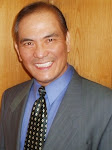
THERE ARE ONLY TWO TYPES OF COMPUTER NETWORKS
Circuit-switched and packet-switched. What type of network do you think is the Internet?
CIRCUIT-SWITCHED NETWORKS
Circuit-switched networks use point-to-point links between the nodes of the network. A node is an endpoint. For example, refer to the map and imagine a regional network of five cities: Chicago, Pittsburgh, Pittsburgh, Boston, and Miami. Each city is a node since it is an endpoint.

A point-to-point link means that each city
(a point) connects, or is linked, directly to another city (another point). How many point-to-point links are possible in a network of five nodes? The answer can always be expressed mathematically.
It is n (n-1) where n is the number of nodes. Don’t let that intimidate you.
FULL-MESH TOPOLOGY
A circuit-switched network consists of point-to-point link. These links create a full-mesh network. That formula calculates the number of links in a full-mesh network.
In this instance, five nodes create a full mesh network that contains 20 links. The following illustration shows a classroom of students.
Since they can’t talk loudly, two students created a tin-can telephone.

Each student holding a tin can is a node. The circuit is represented by the string that connects the tin cans.
If another pair of students wants to communicate, they borrow the tin-can telephone. The circuit has now switched to another pair of nodes.
PACKET-SWITCHED NETWORKS
Packet-switched networks use a single common road that all nodes connect to. Some nodes may be on side roads but ultimately all side roads connect to the main road. Members communicate by sending messages through that road. A message consists of packets. An individual packet is a unit of information that has, among other things, the network address of the sender and recipient.
Today there is no longer a single main road. Instead there are numerous main roads and their number grows each year. This explanation will keep it simple and assume that the network has only one main road. Each node is connected to the main road—some directly but most indirectly.
Note the actual road network in Belgium. Only the main roads are visible but, of course, there are numerous side roads that feed into the main ones.
The following illustration shows the same classroom.

Their teacher decided that, to be fair, each student should be allowed to communicate with any other.
In lieu of the tin-can telephone, the students are now passing notes to each other. Each note contains the addressee’s and sender’s name. This is a packet-switching network.
Each note is a packet and each packet is being switched from one node to another until the packet reaches the addressee.
Notice how much more communication is possible with a packet-switched network. Notice also that the notes will still reach the addressee even if some students are absent.
To be continued…
 PROJECT MANAGEMENT: SHARING SEVERAL LESSONS LEARNED ABOUT HANDLING THE CRITICAL PATH
PROJECT MANAGEMENT: SHARING SEVERAL LESSONS LEARNED ABOUT HANDLING THE CRITICAL PATH







